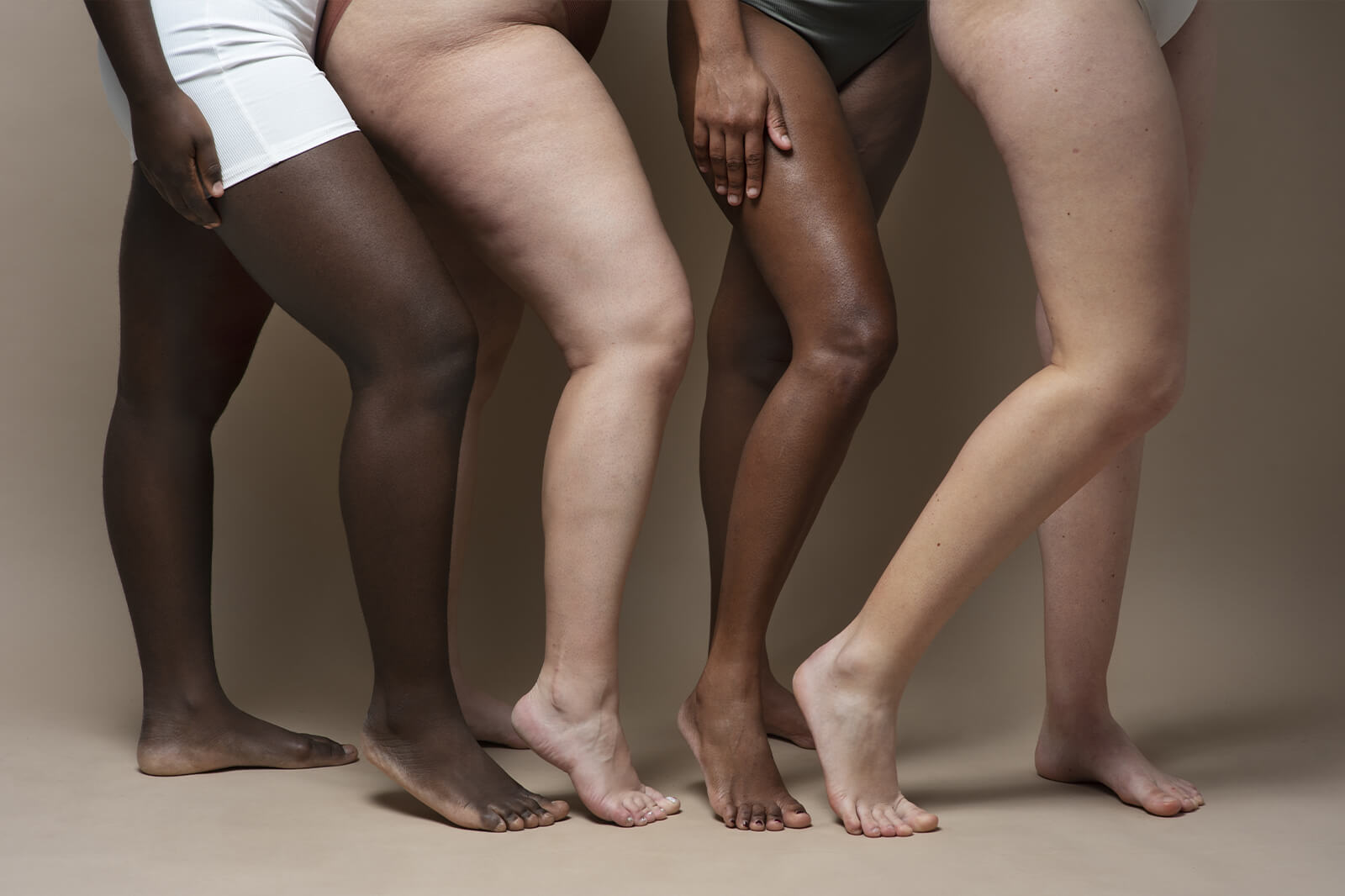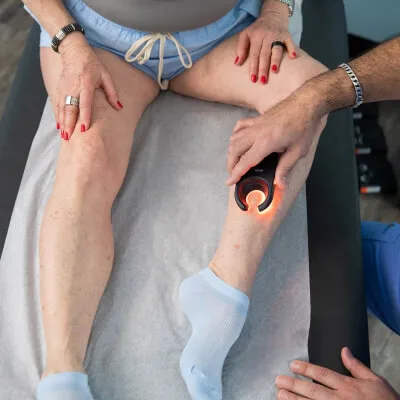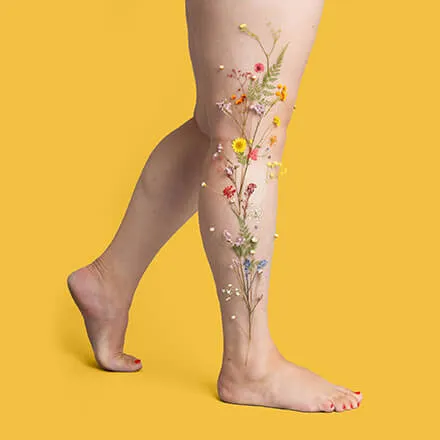Venous ulcers are painful sores caused by poor blood flow in the legs. They can be severe and impact quality of life. A common cause is venous insufficiency, where damaged vein valves allow blood to pool in the legs.
While ulcers can be painful, most can be effectively treated with a combination of medications, wound care, and, when necessary, vascular surgery.
What Are Venous Ulcers?
Venous ulcers are skin wounds created when increased pressure causes vein valves to malfunction and blood to flow in the reverse direction. This backflow (venous reflux) leads to blood pooling in the veins, resulting in venous insufficiency and further pressure buildup. They are the most common type of leg ulcer, impacting approximately 3 in every 1,000 individuals, particularly older adults.
Over time, the veins swell, stretch, and darken. This pressure disrupts the delivery of oxygen and nutrients to nearby tissues, causing them to weaken and break down. Eventually, fluids leak out, and a wound, known as a venous ulcer, appears on the skin. However, venous ulcers aren't the only ulcers to appear on the leg.
Others include:
- Arterial ulcers are caused by inadequate blood flow to the tissue and are usually related to peripheral arterial disease.
- Neuropathic ulcers are caused by diabetes and certain neurological disorders.
- Pressure ulcers (bedsores) are caused by frequent friction or pressure on the affected area.
- Vasculitic ulcers are caused by inflammatory disorders such as lupus.
- Traumatic ulcers are caused by a leg injury that breaks the skin.
Venous ulcers currently affect up to 2 percent of the population, primarily among individuals aged 65 and older.
Causes and Risk Factors
While we've made great strides in treating venous ulcers, understanding the risk factors is key to prevention. Let's explore what could make you more susceptible to developing these pesky sores.
Risk factors for venous ulcers include:
- Obesity
- Smoking
- Leg injury
- Sedentary lifestyle
Symptoms and Characteristics
Venous ulcers are painful and require immediate management to prevent complications. In their early stage, they cause the skin to turn red and itch (stasis dermatitis) and don't appear as a typical ulcer.
Additional early symptoms include:
- Heaviness in the leg
- Skin discoloration
- Hardened skin
- Leg swelling (edema)
- Leg cramping
- Skin itching
- Tingling
The skin weakens as the venous ulcers advance, allowing fluid to seep through. The skin begins to break down at this stage, creating a visible sore.
Common symptoms during this stage include lipodermatosclerosis and the following:
- Shallow sore with a red perimeter
- Yellow tissue over the sore
- Warm or hot skin in the affected area
- Shiny or tight skin around the ulcer
- Leg pain
- Foul odor (if the ulcer is infected)
- Fluid or pus draining from the ulcer
Diagnosis of Venous Ulcers
Physical Examination
A physical examination paired with medical history is the primary method for diagnosing a venous ulcer. During the examination, a physician will check for an open wound or skin changes that may indicate a venous ulcer is developing, such as itching with or without a rash, aching pain in the gaiter area, swelling, and leg cramps. To complete the diagnosis and rule out other conditions, a physician may also utilize additional tests, such as a duplex ultrasound or an ankle-brachial index measurement.
Doppler Ultrasound
The most commonly used diagnostic tool for detecting venous ulcers is a Doppler ultrasound, often called a Doppler study. This non-invasive examination uses high-frequency sound waves to assess blood flow in the veins. It helps identify improper blood circulation caused by damaged valves, a common precursor to venous ulcers.
During the procedure, the doctor gently presses your leg with the Doppler ultrasound probe to view your veins on the computer. You may be asked to bear down to facilitate the observation of blood flow through the veins in your leg. This painless procedure typically takes less than 30 minutes to complete.
Are you concerned about vein health, venous insufficiency, or the development of venous ulcers? Schedule a free comprehensive evaluation with our vein specialists today.
Treatment Options
The most common treatment options include conservative management techniques such as compression therapy, dressing and treating the ulcer at a wound care center, taking medications, or using advanced therapies like skin grafts to promote wound healing. According to the Journal of Clinical Medicine, venous ulcers can heal within six months if treated promptly.
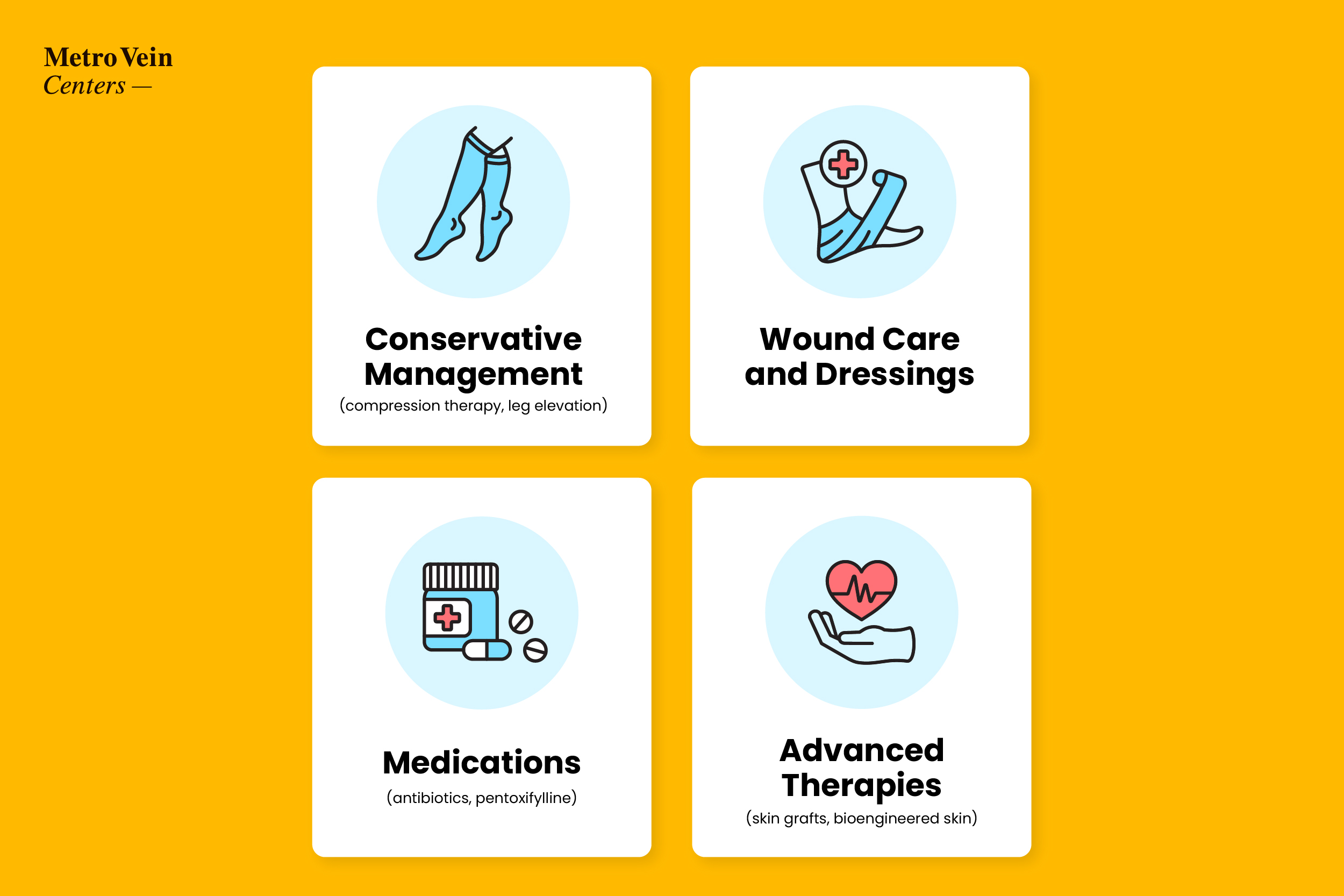
Conservative Management (Compression Therapy, Leg Elevation)
Patients with venous ulcers are often advised to wear special compression stockings to improve blood flow to the affected area. These stockings apply graduated pressure from the ankle up to the leg, which helps prevent blood from pooling or flowing backward. This can reduce the risk of clotting and promote faster healing of venous ulcers.
Elevating the leg is another effective conservative treatment. When the leg hangs down, gravity impedes blood flow to the heart and raises pressure in the veins. By raising the leg, you enhance circulation and reduce pressure.
Wound Care and Dressings
Effective treatment of venous ulcers is essential to promote healing and prevent complications. The first step in standard treatment is proper wound care. This involves thoroughly cleansing the wound, oftentimes with just normal saline, ulcer debridement (the removal of dead and/or infected tissue), and applying a moist dressing to facilitate healing.
Medications (Antibiotics, Pentoxifylline)
Medications are crucial for healing venous ulcers, especially if they leak or heal slowly. Key treatments include antibiotics and pentoxifylline. Antibiotics are helpful in infection control, while pentoxifylline is a vasodilator that improves blood flow, aiding healing.
Advanced Therapies (Skin Grafts, Bioengineered Skin)
Medications and conservative treatments may not heal adequately when venous ulcers become advanced. In such cases, advanced therapies like skin grafts can be beneficial.
A skin graft involves applying a thin donor or bioengineered skin layer onto the venous ulcer. This procedure helps stimulate blood flow and promotes healing. Additionally, it can minimize scarring and lower the risk of the ulcer recurring.
Surgical Interventions
Surgical interventions are required when traditional, noninvasive treatments are insufficient to heal venous ulcers and help prevent ulcer formation or recurrence. These include vein ablation and skin grafting.
Vein Ablation Procedures
Vein ablation, particularly endovenous ablation, is a surgical procedure designed to close varicose veins that can lead to venous ulcers or prevent venous ulcers from healing. In this procedure, a surgeon inserts a catheter into the affected vein and applies heat therapy to collapse it. This treatment is typically a same-day procedure and can often be performed in the doctor's office.
Skin Grafting Techniques
Skin grafting, another surgical solution for addressing venous ulcers, utilizes a small piece of skin or bioengineered skin (grown from donor cells) to cover the ulcer and stimulate healing. The most common skin graft techniques for treating venous ulcers include:
- Split-thickness skin grafts (STSGs): The top and part of the middle layer of skin are removed before the graft is applied.
- Full-thickness skin grafts: The top and middle layers of skin are removed entirely before applying the graft.
- Micropunch grafts: Healthy skin tissue is removed using a micropunch tool and then transplanted to the ulcer.
- Pinch grafts: Circular skin grafts are placed in pockets within the wound bed.
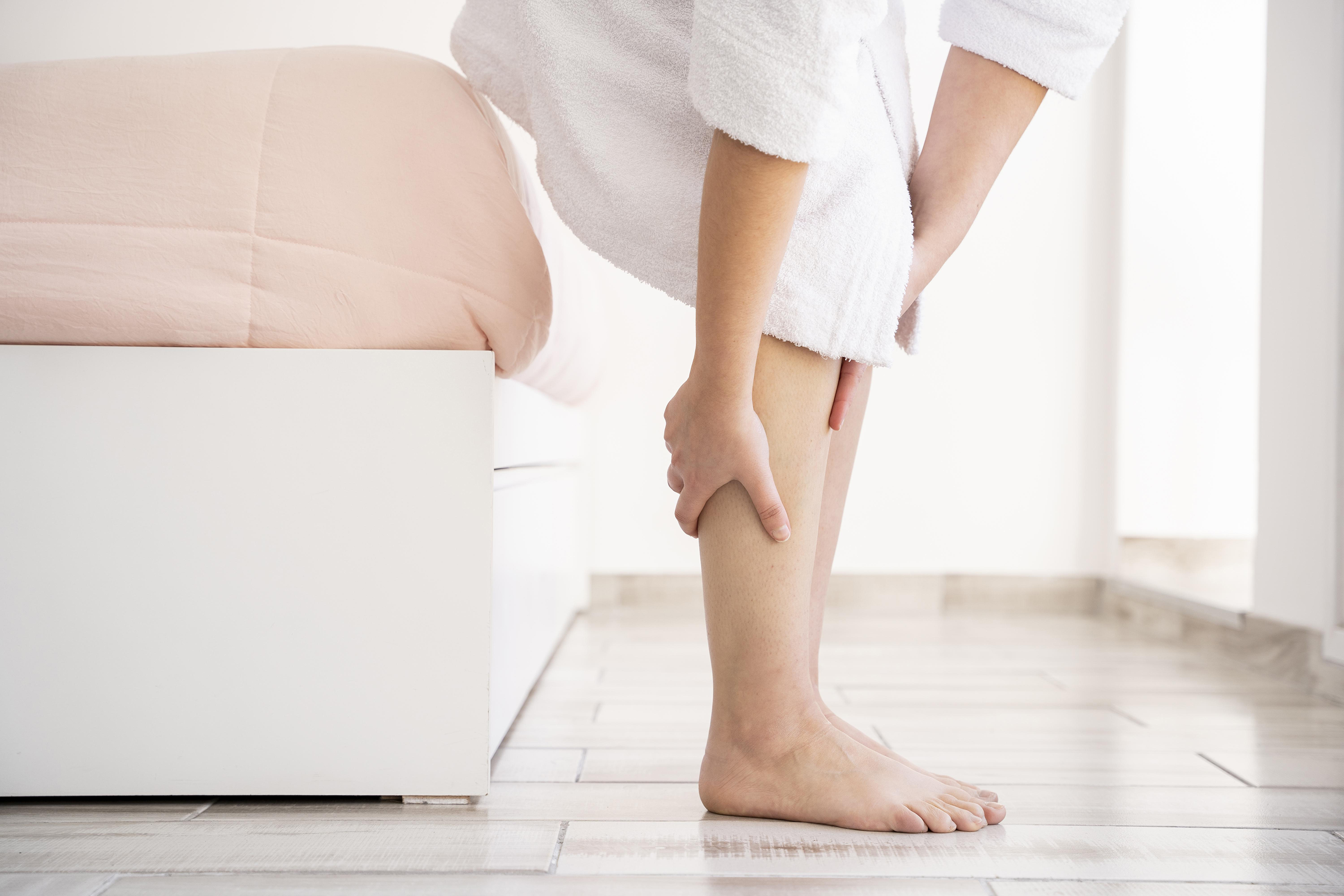
Preventing Venous Ulcers
Venous ulcers can often be prevented, even in those with vein disease. The key is encouraging good circulation in the legs by alleviating excess pressure on the veins. Start by making lifestyle changes that promote healthy blood flow.
They include:
- Elevating the legs (after prolonged sitting or standing)
- Wearing compression stockings to improve blood flow
- Wearing loose-fitting clothing
- Losing excess weight
- Moving the legs frequently
- Exercising regularly
- Quitting smoking
Living with Venous Ulcers
Venous ulcers are painful and disfiguring, often limiting mobility and affecting quality of life. It can also lead to frustration and depression, especially when it restricts daily activities or clothing choices.
Pain Management
Effective pain management is crucial during treatment. While over-the-counter medications may help, they might not suffice for severe pain, and your doctor may need to prescribe stronger options.
Addressing Psychological Concerns
Working with a therapist can provide valuable coping strategies to assist in your healing journey. Techniques such as deep breathing, radical acceptance, and cognitive behavioral therapy reduce stress and improve mental well-being.
Frequently Asked Questions
-
How long does it typically take for a venous ulcer to heal?
Healing time for venous ulcers can vary depending on treatment choice, compliance, whether the underlying cause has been addressed, and how quickly treatment is initiated. If promptly treated, a venous ulcer typically takes six months to heal. -
Can venous ulcers recur after successful treatment?
Yes, venous ulcers can recur if the condition that caused the original remains untreated. -
Are there any dietary recommendations for patients with venous ulcers?
Yes. A balanced diet rich in fresh fruits and vegetables with low-fat content is ideal for those with venous ulcers, as it enhances circulation and reduces inflammation. -
How does smoking affect venous ulcer healing?
Smoking impairs blood flow by constricting the blood vessels. This reduces the blood supply to the wound, which impedes the healing process. -
What new technologies are being developed for venous ulcer treatment?
New technologies like smart compression garments, negative pressure wound therapy, and cell-based therapies are known for their tissue regeneration benefits, which can help venous ulcers heal more quickly.

Dr. Philip LoPresti
Meet Dr. Philip LoPresti DO, DABVLM, FACS, a board-certified vein specialist and surgeon with over 20 years of experience. Schedule an appointment with him in Queens, NY today.
Meet Dr. Philip LoPresti
Trusted insight from the nationally accredited, board-certified vein doctors at Metro Vein Centers.



